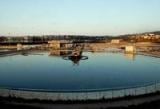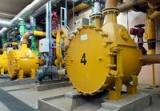Parisian plumbing
Spiral heat exchangers have treated sludge from 8.5 million Parisians >30 years
DATE 2023-11-28 AUTHOR Anna McQueen
A city of 8.5 million needs a wastewater system that is reliable and efficient and up to the challenges of population and weather. In Paris, the Achères treatment facility has chosen Alfa Laval spiral heat exchangers.
When taking that dream vacation to Paris, the Cityof Light, not many tourists spare a thought for what happens to what they leave behind. But as they stroll along the boulevards or along the banks of the Seine,they might be impressed to know that to the west of the city, the Achères wastewater treatment plant is working round-the-clock to process up to 2 million cubic metres of wastewater generated every day by the city’s inhabitants and visitors and by inclement weather.
The Achères facility is the biggest wastewater treatment plant of its kind in Europe, second only to Chicago’s on a global scale. A treatment facility has existed on the site since the end of the 19th century,but the current facility was constructed in 1940, and in 1970, it became part of the network managed by the Syndicat Interdépartemental Pour l’Assainissement de l’Agglomération Parisienne (SIAAP).
Key to the smooth running of this essential public service are industrial partners who can meet the challenge of such a high-turnover operation. And that is why, when the old Alfa Laval heat exchangers in the sludge conditioning digesters in the Achères III facility began to show signs of wear and tear, the SIAAP decided to return to Alfa Laval for replacement parts.
“We’d had these six spiral heat exchangers in service since 1972, and they had served their time very well,” explains Daniel Alibert, manager of the Biogas Digestion Production Unit at the Achères plant. “Then in 2003, after more than 30 years of service, we noticed one of them needed to be replaced. We were so happy with the longevity of the product that we decided to contact Alfa Laval and replace it with the exact same model. When another exchanger needed replacing a year later, we decided to replace them all.
”The Achères site has undergone a full reorganization and retrofit, including a complete management reshuffle that set the project timeline back a bit, but the last spiral exchanger was finally fitted in December 2009. “With such a big project, we had to put out a call for tenders, but in the end we chose Alfa Laval,” says Alibert. “It didn’t come down to a question of cost; our choice was based on the 30 years of experience we’d had with Alfa Laval spiral exchangers in the digesters and the 30 more years we’re hoping to get.”
After an initial pretreatment to remove the largest waste, wastewater for treatment is decanted and then the sludge is aerated, which is when the natural bacterial processing takes place. It then undergoes a digestion process where it is heated to 35 degrees Celsius. The methane that comes off the waste is recycled as a source of energy for the plant to heat the exchangers in the digesters, to run the machines to aerate the aeration basins and for everyday energy on site. Some 60 percent of the site’s electricity needs are generated in this way.
The resulting sludge then undergoes a final treatment during which it is sterilized with the addition of steam at 180 degrees Celsius before being pressed and and then handed over to the agricultural industry for use as fertilizer. “All the materials we use must be of the highest standard,” says André Pensard, digestion manager. “Digestion is a crucial stage of the waste treatment process. If we can’t maintain the right temperature, not enough gas is created, and that could lead to all sorts of problems. But the Alfa Laval exchangers never break down.”
 Of all the exchangers used for digestion by the Achères site, 50 percent are currently Alfa Laval spiral exchangers and the rest are traditional tubular exchangers. “The spiral exchangers are very reliable and simple to maintain,” says Pensard. “Moreover, we’d never fit tubular ones in the space we have available here. They’re six times the size.”
Of all the exchangers used for digestion by the Achères site, 50 percent are currently Alfa Laval spiral exchangers and the rest are traditional tubular exchangers. “The spiral exchangers are very reliable and simple to maintain,” says Pensard. “Moreover, we’d never fit tubular ones in the space we have available here. They’re six times the size.”
Indeed, the SIAAP is so pleased with the performance of the Alfa Laval spiral exchangers that it has ordered eight more to replace the spiral exchangers in the Achères III facility and five to replace tubular exchangers in the Achères II facility. “This is an aggressive environment where problems of corrosion are commonplace, so the materials we use must stand up to that,” says Alibert. “We need robust and lasting quality, and Alfa Laval spiral exchangers have demonstrated that they are more than capable of meeting our needs and those of 8.5 million Parisians every day!"
Customer's voice
“With such a big project, we had to put out a call for tenders, but in the end we chose Alfa Laval,” says Alibert. “It didn’t come down to a question of cost; our choice was based on the 30 years of experience we’d had with Alfa Laval spiral exchangers in the digesters and the 30 more years we’re hoping to get.”
“This is an aggressive environment where problems of corrosion are commonplace, so the materials we use must stand up to that,” says Alibert. “We need robust and lasting quality, and Alfa Laval spiral exchangers have demonstrated that they are more than capable of meeting our needs and those of 8.5 million Parisians every day!"
Daniel Alibert, manager of the Biogas Digestion Production Unit at the Achères plant.
Product
The compact Alfa Laval ALSHE STW spiral heat exchanger with self-cleaning design is suitable for any sludge/water duty, either as a pre-designed standard, or as a custom design.
Reduce your environmental footprint with Alfa Laval's complete spectrum
Alfa Laval helps reduce the environmental footprint from water and waste streams, by maximizing reuse of water, by turning waste to value, and by minimizing energy consumption and waste. We offer a complete spectrum of equipment for wastewater treatment, filtration and sludge treatment that helps produce clean effluent for discharge or water reuse, recover heat and reduce the amount of sludge for disposal.
